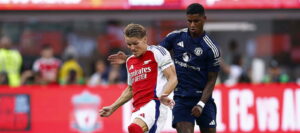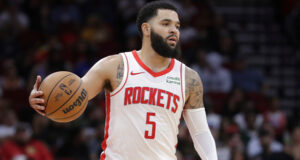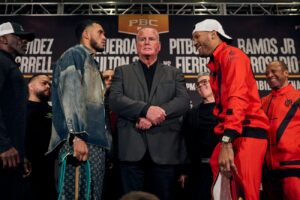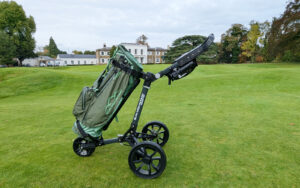Did you know that the NHL’s player development strategies can significantly influence the growth of hockey in the UK? By comparing the United Kingdom’s Elite Ice Hockey League (EIHL) with the NHL, we can uncover valuable insights into fostering competitive intensity within British leagues.
The NHL’s emphasis on player evaluation models and fast-paced gameplay serves as a blueprint for enhancing speed and physicality in the UK. You may wonder how adapting such systems could transform leagues like the EIHL.
There’s a lot to unpack, so let’s dive right in.
League Structure and Competition Dynamics
While the Elite Ice Hockey League (EIHL) and the National Hockey League (NHL) both offer competitive ice hockey, their structures differ considerably – and that influences the dynamics in each league.
The EIHL’s single-division format with 10 teams contrasts sharply with the NHL’s two-conference, four-division setup.
Unlike the NHL’s best-of-seven playoff series, the EIHL’s playoffs use a two-legged quarter-final. Team placements depend on respective governing bodies, and only the EIHL incorporates a separate Challenge Cup.
NHL’s 82-game season compared to EIHL’s 54-game season means a different level of competitive intensity. Local media in the UK offers extensive coverage, with dedicated reporters often featuring local ice hockey teams, while national media coverage remains limited. Platforms like FanDuel SportsBook amplify fan engagement through tailored betting markets tied to league-specific dynamics.
These structural differences shape how competition develops and how fans engage with each league.
Differences in Gameplay and Tactical Approaches
It’s often said that a smaller ice rink can enhance the tempo of a game, and the difference in rink size considerably influences gameplay and tactics across the EIHL and NHL.
The NHL, with its smaller rinks, emphasizes a fast, physical style of play. Here’s how each league differs tactically:
- Speed and Physicality: NHL games are known for their fast pace and high physical intensity, keeping fans captivated with continuous action.
- Skill and Strategy: European hockey, including the EIHL, emphasizes skillful play and strategic decision-making over sheer physicality
- Balanced Style: The EIHL combines elements of both approaches, blending skillful play with a moderate level of physicality. Training in quick passing and puck movement is essential to maintaining possession while enhancing overall fitness and tactical precision on the ice.
Player Development and Evaluation Strategies
Examining hockey’s player development and evaluation strategies reveals distinct approaches between leagues, each tailored to their unique competitive environments. The Elite Ice Hockey League (EIHL) primarily features players from the East Coast Hockey League (ECHL) and American Hockey League (AHL), emphasizing the development of local talent. By implementing roster rules that limit “non-homegrown” players, the EIHL aims to foster British talent, though this can sometimes restrict broader player development opportunities.
In contrast, Great Britain Hockey’s Talent Development Framework (TDF) focuses on individualized growth through adaptive, game-like practices designed to enhance skills and decision-making.
Meanwhile, the National Hockey League (NHL) employs advanced evaluation tools like NHL Equivalency (NHLe) models, which quantify player potential across various leagues. These models underscore the importance of precise evaluations in a high-stakes environment, offering valuable insights into how different systems shape hockey talent globally.
Global Trends and International Interactions
Despite their diverse structures, global hockey leagues contribute uniquely to the sport’s international landscape. Understanding these global trends can enhance the EIHL’s growth.
- Player Movement: NHL lockouts have brought international players to European leagues like the EIHL, boosting its profile. The EIHL’s establishment after the Ice Hockey Superleague’s collapse was a pivotal moment, allowing the league to offer opportunities during such lockouts.
- Cultural Exchange: European leagues focus on skill and tactics, whereas the EIHL combines North American and European styles, showcasing an eclectic hockey culture.
- International Rankings: With the Elite Ice Hockey League (EIHL) participating in tournaments like the Champions Hockey League (CHL), its competitive reputation in Europe is steadily improving, even though it remains ranked below Europe’s top leagues.
Adjusting to Professional Demands
When shifting from junior to professional hockey, players encounter significant challenges related to physicality and speed.
Professional leagues demand quicker gameplay and more intense physical confrontations. Adaptation is essential as tactical sophistication increases, and events occur at a faster pace.
Changing players often struggle with skill level expectations, as professional players control fewer shot attempts and face noticeable performance disparities.
Adapting to varied league styles, like from DEL to EIHL, presents additional hurdles.
Recognizing these demands is vital for development, providing younger players with the necessary ice time and adaptability skills required for success in elite hockey.
Lessons to be Learned
By examining the National Hockey League’s (NHL) strategies, we can uncover valuable insights to enhance the appeal of hockey in the UK and improve player development. For instance, NHL players average speeds of 20 miles per hour during games, underscoring the significance of prioritizing speed and physicality in training programs.
Adopting competitive league structures and improved evaluation strategies could elevate the intensity and excitement of the Elite Ice Hockey League (EIHL). By applying these insights, stakeholders in UK hockey can better meet professional demands while driving the sport’s growth.





